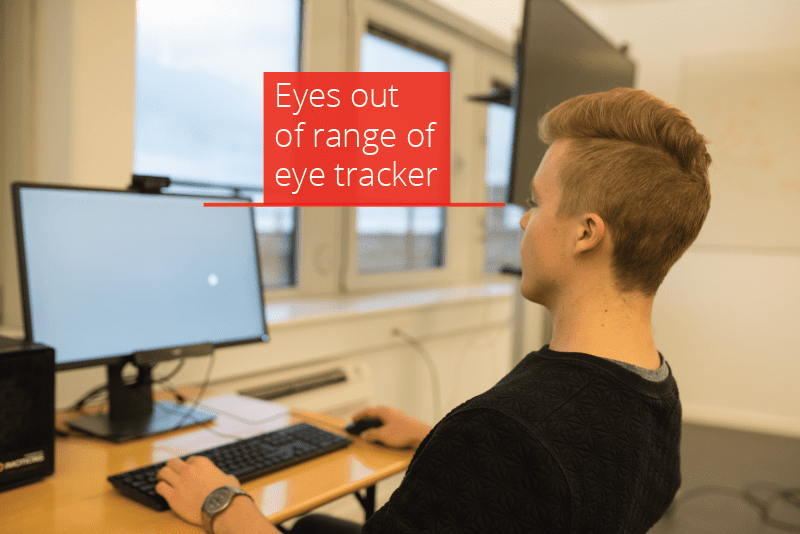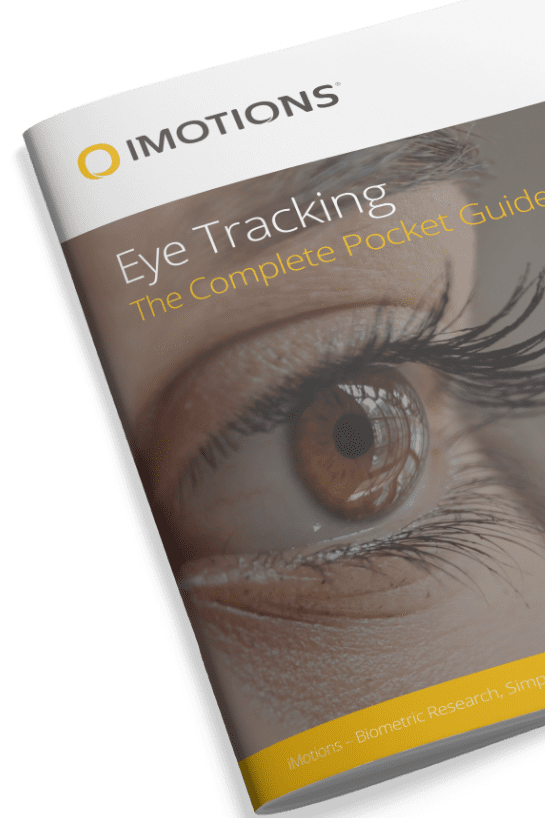Eye tracking is a technology that continues to see increased interest and use – from scientific research, to the growing adoption into the devices we use, our eyes have been shown to reveal more than just what we’re looking at.
Studies have discovered new ways in which our individual differences and environment adjust our attentional processes, paving the way for earlier diagnostics and a better understanding of humans. Companies expand their knowledge of how to appeal in the best way to their customers, and UX designers are able to advance their ideas and compositions to be more human-friendly.
These are just some examples of the myriad ways in which eye tracking is advancing our understanding and environment. All of this is of course carried out non-invasively, making eye tracking a straightforward and sensible measure.
Of course, these advances have all been dependent on robust and reliable eye tracking research being carried out. While this appears to be common sense, there are many ways in which suboptimal research scenarios can undermine the end result.
At iMotions, we’re strong believers in good science, and want to ensure that every piece of research is carried out to the highest standards – which will ensure that these advances can keep on happening. That’s why we’ve put together our 5 essentials for eye tracking research.
Table of Contents
1. Lighting
Almost all eye trackers use the reflection of infrared (or near-infrared) light from the pupil (with the help of a few algorithms) to follow the movement of the eyes. This is often used to create a bright pupil that can reveal the location of the eyes.
The bright pupil method works well in controlled environments – as long as the lighting condition is stable, the experiment can be carried out, without too much concern for lighting levels (within reason of course).
Problems with this method arise when the eye tracking is carried out outside, in the wild. Differing levels of infrared light can interfere with the signal that the eye tracking camera receives, ultimately reducing the accuracy of the tracking.
Eye tracking glasses (and some screen-based eye trackers) are designed to be used in situations that have fluctuating infrared levels, and use a different method to circumvent this potential issue. While it is true that most screen-based eye trackers use a combination of methods to ensure accuracy of measurements, it can be worthwhile making sure that lighting levels are kept consistent.

Ensure high accuracy by keeping lighting levels consistent whenever possible.
Lighting issues can also be particularly important if you plan on looking at pupillometry (levels of pupil dilation). Differing levels of brightness will have the largest impact on pupil dilation, so it’s important to ensure that any visual stimuli presented to participants are matched in this way (pupil dilation is also impacted by cognitive workload demands, which might be something to consider in your experimental setup).
2. Movement
Some of the earliest eye tracking devices required that the respondent’s head was attached to it (temporarily, I should add). This method ensured that there wasn’t any movement that could disrupt the signal collected by the camera, but also wasn’t exactly the most realistic set of conditions for an experiment.
Thankfully, modern devices allow a wide range of movement – yet they still have their limits. It’s important that the respondent stays within what is known as the “headbox”, the area that the eye tracking camera is able to accurately follow the eyes in.

If the respondent moves too far away from the eye tracker, the camera will not be able to reliably detect the eyes.
Make sure that the respondent is sitting comfortably in front of the eye tracker, and that they are aware that they shouldn’t move around too much.
If the experiment requires more movement, there is always the possibility of using eye tracking glasses, or advanced multi-camera setups.
3. Obstruction
Eye tracking requires a clean line of sight between the eyes and the camera. This seems obvious for an entire experiment, but even brief interruptions can take away crucial data.
While the first step in preventing interruptions is to make sure that respondent knows not to obstruct their eyes, the specifications of the eye tracker can also have an impact.
Different eye trackers have different recapture rates – how fast the device can detect the eyes again after an interruption. If you think this is likely to occur, then make sure you have a device that is quick to get back on track.

Stopping obstructions and having an eye tracker with a fast recapture rate will mean that this is unlikely to be an issue in an experiment.
Some eye tracking devices are even able to detect and follow the eyes even if the respondent is wearing sunglasses. While this obviously means your respondents can continue to look cool during data collection, it also means more flexibility for those taking part – increasing the realistic nature of the research (and that’s coolest of all).
4. Calibration
Good calibration – for every respondent – really is essential. If the device calibrates to the wrong measurements, it will take those errors into the results which could render your experiment meaningless. This is obviously a situation you want to avoid.
Most eye trackers calibrate quickly and easily, but it’s important to make sure that it’s done correctly. It’s quicker to repeat the calibration step than an entire experiment.

Good calibration is essential for every eye tracking study.
5. Data Quality
One thing that is all too easily overlooked is the data quality of eye tracking experiments. Data quality pertains to not only how long the device was able to track the eyes, but also how accurate that tracking was.
It can be important to check both of these aspects to see if your data really is showing you what you want to know.
Check out: 10 Most Used Eye Tracking Metrics and Terms
Further to this, there are some limitations to eye tracking that could prevent you from certain insights and discoveries. As eye tracking is largely used to reveal attentional processes, it can tell you what – but not why.

Good data collection requires that the data is not only accurate but suitable for the research question.
In other words, it doesn’t reveal information about the emotional valence (positive or negative emotion) that someone is experiencing. Other biosensors are able to fill this gap, giving you the whole picture.
Check out : How Eye Tracking Technology Is Changing The World [5 Examples]
In summary, you want to make sure that the lighting is optimal, that movement is reasonable given the type of eye tracking device, that obstruction is limited, that calibration is carried out, and that both accurate and suitable data is used.
Academic Applications
Historically, eye tracking has been used across a range of different research fields, and for various applications within the commercial realm, too. In psychology, understanding when and how people look is essential for understanding how attention is distributed. For example, ET is used in the
Implicit Association Test
Stroop Test
Iowa Gambling Task.
These other psychological explorations to gain deeper insights into cognitive processes underlying attention, learning, and memory.
In the medical field, ET can be used to diagnose neurological disorders such as ADHD, Autism Spectrum Disorder, OCD, Schizophrenia, Parkinson’s, and Alzheimer’s disease, and continues to be utilized to further research in these fields. Additionally, ET can be used to detect states of drowsiness or support other fields of medical use, quality assurance or monitoring, and these fields continue to expand and grow into new and exciting research areas.

Commercial Applications
Over the last few decades, eye tracking has become increasingly important for market research. Many leading brands use this tool to evaluate their products, designs, and advertising campaigns. Commercial researchers utilize both mobile eye tracking glasses and screen-based solutions to investigate the shopping behavior of their customers with the goal of optimizing the overall customer experience.

Check out: How to do Product testing: In-Store Shelf Testing
In neuromarketing, analyzing what people attend to or ignore and how visual attention is distributed can be critical in determining optimal package designs, store layouts, and point-of-sale displays. Eye tracking for usability and user experience is also an emerging field using these methodologies. One prominent use case is website testing. Commercial researchers employ eye tracking to investigate gaze patterns on old and new website designs to measure, for example, attention to real estate, communication, and calls to action (CTA). Similar applications can be applied to mobile apps on tablets and smartphones, too.
Learn More about Consumer Behavior
Eye tracking is also used in packaging research, specifically pertaining to the design of packages to understand what grabs attention, which elements or information may go missed, and customers’ overall preferences. In this way, researchers aim to ensure that the package for a product receives visual attention on the shelves, and effectively draws attention to the salient images and information on the package itself. Optimizing the way a package draws attention and the way this attention is distributed may be contributing factors in drawing consumers to purchase.

Check out Performance and Training Applications
Eye tracking methodology has also been introduced within the human-computer interaction, virtual reality, and gaming industry space to enable game designers to better understand the game experience. These insights may allow designers to better control the experience, optimize usability, and create features that further push the boundaries of reality and improve the gaming experience of users.
In the media industry, eye tracking is utilized to measure attention distribution on media ads, trailers, full films, television shows, and more. While Galvanic Skin Response GSR is utilized to provide both overall and moment to moment insights on the emotional arousal and engagement of an audience throughout a piece of creative, eye tracking can provide a view into how visual attention is distributed in key moments.
Eye tracking can provide a wealth of information about the visual experience of consumers and users across a wide range of informational materials, products, and experiences. Consider adding eye tracking as a methodology for your research to complement traditional methods.
I hope you’ve enjoyed reading about the 5 essentials of eye tracking research. For a more extensive guide:
Eye Tracking
The Complete Pocket Guide
- 32 pages of comprehensive eye tracking material
- Valuable eye tracking research insights (with examples)
- Learn how to take your research to the next level













